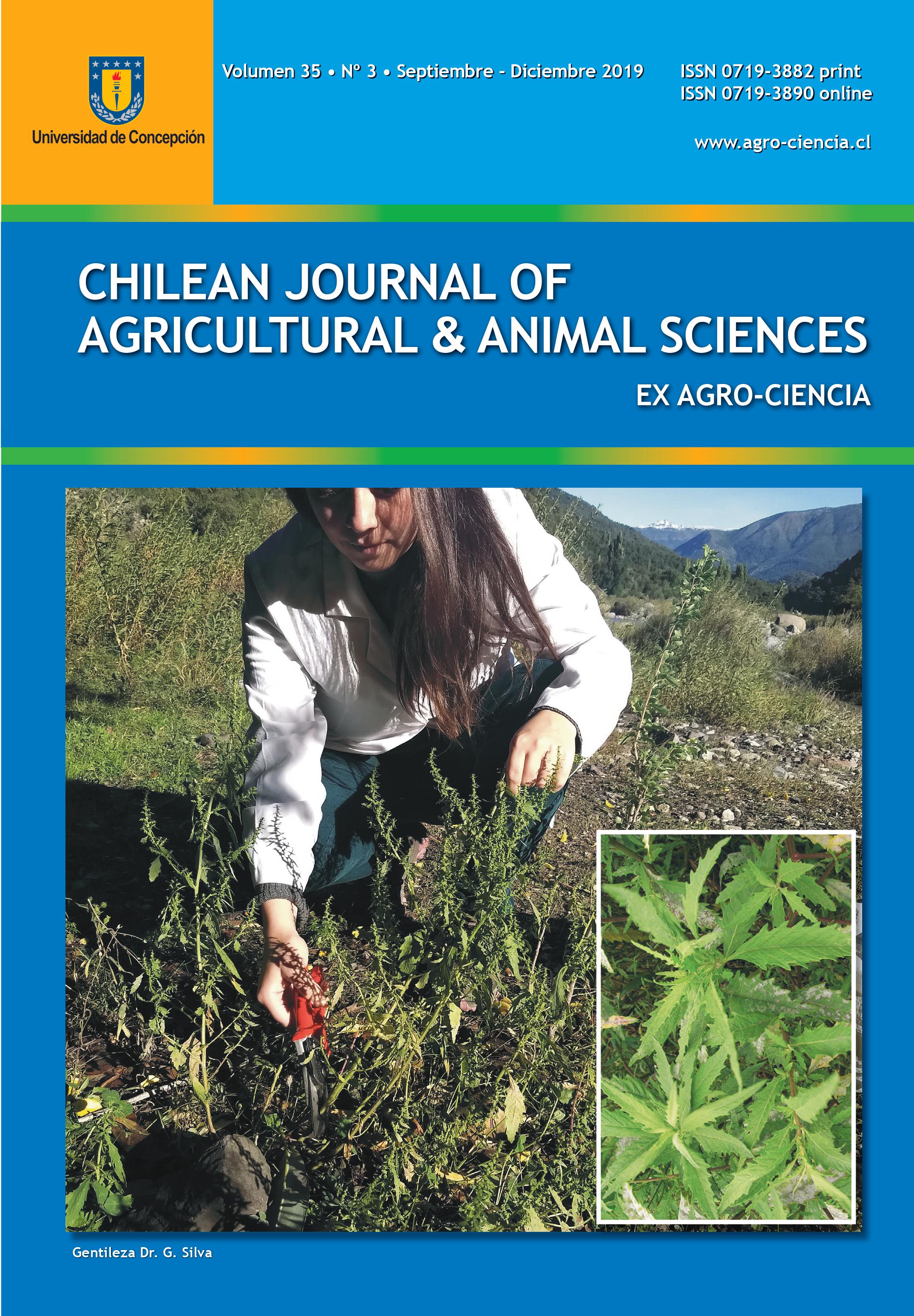CAN COMPENSATORY GROWTH MITIGATE A FEEDING RESTRICTION IN GROWING LAMBS?
Resumen
The aim of the study was to evaluate compensatory growth in lambs under semi-extensive growing conditions utilizing pasture haylage from Lotus uliginosus cv. E-Tanin as the main feed
resource. Single (n = 36) and twin-born (n = 35) crossed Polwarth x Finnish Landrace lambs were assigned to three feeding treatments (restriction period) to achieve: low weight gain (LWG) less than 30 g a-1 d-1, medium weight gain (MWG) ~ 60 g a-1 d-1; and high weight gain (HWG) (~90 g a-1 d-1 for 82 days. Lambs were offered pasture haylage at LWG, haylage plus corn at MWG, and haylage plus corn and soybean meal at HWG, restricted at 2.5 to 3% of BW. Afterwards, lambs were individually penned and fed ad libitum for 82 days (refeeding phase). Live weight and feed intake (FI) were recorded during the experimental period, and average daily gain (ADG) and feed conversion ratio (FCR) were estimated. Ribeye area (REA) and fat depth (FAT) were measured in the refeeding phase. Both ADG and FI were significantly different (P < 0.05) among treatments (HWG > MWG > LWG) in the feeding restriction period. FCR did not differ (P > 0.05) between MWG and HWG but were lower (P < 0.05) than LWG. No differences (P > 0.05) were found in ADG between single and twin-born lambs during the refeeding period. Initial and final REA was greater (P < 0.05) in MWG and HWG than LWG. Even though haylage is a cheap feed alternative in semi-extensive production systems, it does not enable a full compensatory growth of LWG and MWG lambs.







